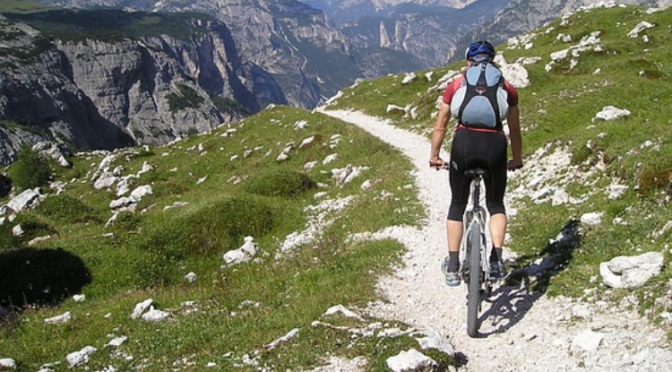Travel tips to Fennoscandia Countries: Norway
Travel tips to Fennoscandia countries: Norway article post is a fast guide to what to expect when visiting the land of Norway. Norway is unique in the geographical sense, covering the coastline of the Arctic ocean and the Fennoscandia region.
About the county
Norway, a Nordic country lying on the western portion of the Scandinavian Peninsula is located in Northern Europe. It also borders Sweden, Finland, and Russia. Norway is an outstandingly beautiful country with a long coastline, snowy mountains, and breathtaking fjords. Oslo is the capital of Norway and also the largest city. Norway is bestowed with lots of natural beauty encompassing wild forests, historic towns, and beautiful fishing villages. The country is very hospitable to the tourists and people are very friendly too. Many tourists are attracted by the famous midnight sun of the Arctic. All three big cities of Norway offer different experiences to visitors. Norway is a place to be for nature lovers and for cultural enthusiasts. Norway is truly one of the greatest tourist destinations of Europe.
Travel tips to Fennoscandia countries: Norway Population & Languages
The population of Norway is only 4.6 million and the official languages being spoken are Bokmal Norwegian and Nynorsk Norwegian. Other languages that are also spoken in Norway include Sámi and Finnish.
Travel tips to Fennoscandia countries: Norway electricity
The voltage is 230 V, and the frequency is 50 Hz. The types of plugs used are Round pin attachment plug and “Schuko” plug and receptacle with side grounding contacts.
Geographic Location
It is a Nordic country lying on the western portion of the Scandinavian Peninsula and located in Northern Europe. It also borders Sweden, Finland, and Russia. About two-third area of Norway is mountains, has around fifty thousand small islands along its coast. It also has one of the longest coastlines in the world.
Travel tips to Fennoscandia countries: Norway climate
The climate of Norway can be termed as Temperate with hot summers and cold overcast winters. The highlands of interior Norway have an arctic-like climate with snow, severe wind chill and frost. Most of the rain is along the coastal areas and comes down in winter quite heavily and frequently. Winters are mild too along the coastal areas.
Local Customs
Like any other country, Norway has its own customs too. It is customary not to drink until the host makes a toast. It is customary for guests to offer gifts to the host of a meal. Smoking is prohibited in most public areas. Casual dress is acceptable for everyday wear. Tipping the taxi drivers is not customary. Tipping up to five percent is customary for service in restaurants. Porters at railway stations and airports charge per piece, while porters at hotels generally charge around NOK5-10 depending on the number of bits of luggage.
Attractions
- Bergen – Numerous museums, galleries, aquarium, medieval age buildings, cable car to the top of Bergen’s hills and boat trips to fjords.
- Oslo – Old medieval buildings, churches, modern architecture, museums like Edvard Munch Museum and the Norwegian Folk Museum, art galleries, Vigeland Park, and Akershus Fortress
- Fjordland – Geirangerfjorden is known for tiny S-shaped fjord,
Sognefjord – the longest and the deepest fjord, beautiful villages such as Balestrand and Flam, old stave churches, Nærøyfjord – Narrowest branch of the Sognefjord and Plateau of Jostedalsbreen glacier - Tromsø – Arctic cathedral, Polaris and Tromsø Museum
Travel
By Air – Many airlines operate to Norway like Braathens SAFE (BU) and SAS Scandinavian Airlines (SK), a Scandinavian airline, Air France, British Airways, Finnair, Icelandair, KLM, Lufthansa, Northwest Airlines, Norwegian Air Shuttle, Ryanair and Swiss Airlines. Oslo International Airport (OSL) (Gardermoen) (website: www.osl.no) is the biggest airport of Norway which is located 30 miles north of Oslo.
Sea – The important passenger ports are Bergen, Kristiansand, Larvik, Oslo, and Stavanger. The main sea routes from the UK, operated by Fjord Line and DFDS Seaways respectively, are from Newcastle to Bergen and to Kristiansand.
By Rail – The country is part of the extensive network of trains connecting the European cities. If you are coming from the UK, the connections are from London via Dover/Ostend (via Denmark, Germany, The Netherlands, and Sweden) or Harwich/Hook of Holland, or from Newcastle to Bergen via Stavanger. It is also connected to Sweden through two routes, with daytime and overnight trains from Copenhagen, Malm, and Stockholm.
Duty-Free Items
- 200 cigarettes or 250g of tobacco products and 200 leaves of cigarette paper for EU countries.
2. 400 cigarettes or 500g of tobacco products and 200 leaves of cigarette paper for Non-EU countries.
3. 1liter of spirits and 1liter of wine or 2liter of wine and 2liter of beer for EU countries.
4. 1liter of spirits and 1liter of wine or 2liter of wine and 2liter of beer for Non-EU countries.
5. 50g perfume or 500 ml eau de toilette
6. Gifts, Food, fruits, medications and flowers for personal use of value up to 3,500 km
Prohibited Items
Un-canned goods, meat or dairy products, Narcotics, firearms, ammunition, weapons, eggs, plants, endangered species, fireworks and alcoholic beverages that contain more than sixty percent alcohol.
Thank you for visiting http://fennoscandia.net and reading this Information on vitamins and supplements article post. We hope this was helpful and useful to you. Please do share this link with your friends. Thank you.

